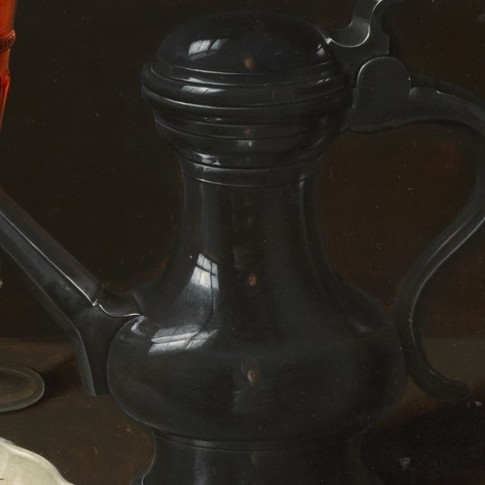Throughout much of art history (until the 19th and 20th centuries), painting was divided into different genres. The main ones were:
History painting
Portraiture
Landscape
Still life
These were categorized as major or minor genres, and consequently, the painter who created them was also framed within this hierarchy. History painting, which typically depicted mythological, religious, or allegorical subjects, was considered the major genre and was usually the one that a painter would create to achieve fame and recognition.
Portraiture, landscape, and still life, in that order, were considered the minor genres and therefore the ones in which women artists usually worked:
When academies and schools appeared, women were rarely admitted, and if they did gain access, they were excluded from anatomy classes, where models were drawn from life. It was considered immoral and unacceptable for women to attend these classes for the dignity of a woman.
With this lack of knowledge in anatomy, they could hardly produce historical works. Most female painters dedicated themselves to portraiture and still life.
Clara Peeters: A Master of Still Life
Today I want to introduce you to a painter who, with absolute mastery and intelligence, transgressed the norms in a subtle but powerful way. Clara Peeters was a 17th-century Dutch painter of whom almost nothing is known. And yet, her elaborate still lifes and extraordinary technique have passed into history, discreetly but increasingly claiming the place she deserves.

Exquisite Details and Hidden Self-Portraits
The exquisite attention to detail in Clara Peeters' paintings accentuates the impression that we are looking at the everyday objects of ordinary life. Despite the distance in time and space from the moment of the painting and the elements that appear in it.
However, what is truly fascinating about this artist is that the painter's own image appears repeated in the same painting several times in a barely perceptible way, in the reflections of metallic surfaces.

The study of materials and textures is meticulous, and the tiny self-portraits are more or less modified depending on the reflection of light and the shape of the object on which it is painted, usually jugs and glasses.
An Act of Self-Determination and Reclaiming Her Place
It has been considered if the painter was trying to demonstrate her technical excellence and reaffirm her reputation as a painter. However, the meaning of this act of self-determination goes much further.
Peters talks about her presence and urges us to acknowledge her existence. As a creator and author, she does not portray herself passively, but shows herself painting the picture that we are seeing. We are connected by the moment of creation of the work in question, more than 4 centuries ago, with the instant in which each observer stands before the painting and delights in that intricate and intelligent game that Peeters gives us.
We recognize a courageous exercise, not only of identity as a painter, but also of personal vindication as a woman and all her difficulties in recognizing herself and being recognized as an artist.




Comments